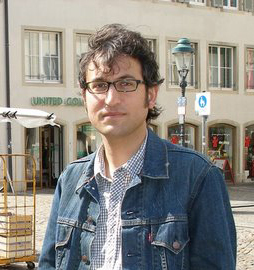 Mark Golitko
Mark Golitko
Assistant Professor Mark Golitko is fascinated by social networks — prehistoric social networks, that is.
By using elemental chemistry to figure out where archaeological objects like ceramics were produced and how they moved around, he can learn a great deal about the communication patterns of people who lived thousands of years ago.
“I’ve always wanted to know how things got to be the way they are today, and why we as humans do the things we do,” Golitko said. “Anthropology and archaeology make it quite clear that you can’t understand now without understanding the long history — and prehistory — that got us to this point.”
Golitko, who came to Notre Dame as a visiting assistant professor in 2015, has accepted a position as an assistant professor in the Department of Anthropology beginning this fall.
A specialist in prehistoric archaeology, he is currently examining how people on the north coast of Papua New Guinea have responded to major environmental changes over the last 12,000 years.
In the ongoing project, he studies how coastal people offset the risk resulting from those changes, including their subsistence strategies and their long-distance inter-village connections.
Golitko is also working on the Bronze Age Körös Off-Tell Archaeology (BAKOTA) project — a field school in Hungary that questions the relationship between social inequality and participation in a dense European trade network during the Bronze Age.
He shares his research with students in courses based on themes in his work, including the archaeology of warfare and the anthropology of the Pacific. He is also a proponent of hands-on, collaborative research — bringing students along on field projects and working with them to collect and interpret lab data.
“Archaeology — and anthropology in general — offers students perspective on the wide range of ways of living that our species is capable of,” he said. “It shows us both the unique circumstances we live in today in the modern, industrialized world and the repeated themes of the human past in regards to violence, our relationship with the environment, and the social and economic structures we build for ourselves.”
Because his work spans a range of subfields, Golitko was particularly drawn to Notre Dame’s Department of Anthropology.
“The department does a great job of integrating diverse areas of anthropology in a workable way, which makes this a very intellectually inspiring place to work,” he said. “Notre Dame has a clear vision of the kind of institution it wants to be, how it can achieve that, and it is all about providing students and faculty with the support they need to succeed.”
Originally published by at anthropology.nd.edu on April 21, 2017.